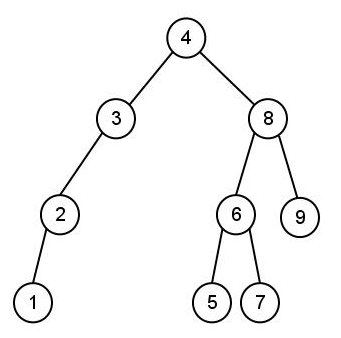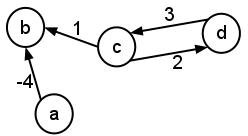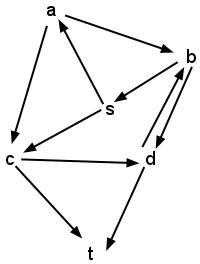CS35: Final Exam Study Guide
This study guide includes topics covered since the midterm. You
should also study all concepts from earlier in the course. The
midterm study guide is available here.
You should be able to define or explain the following terms:
- Quick sort, partition, randomized quick sort, and pivot
- Concepts related to sorting: runtime, comparisons, swaps,
in-place sorting, stable sorting
- Trees and many related terms and properties, including nodes,
the root node, leaf nodes, internal nodes, parent, child, path,
depth of a node, subtree, height of a tree
- Compare and contrast linear data structures with trees
- Tree traversals: pre-order, in-order, post-order, and level-order
traversals
- Binary tree
- Binary search trees and the BST property
- Dictionaries (generally)
- AVL trees and the AVL tree property
- Tree rotations
- The recursive definition of binary trees, binary search trees, and AVL
trees
- Priority queue abstract data type
- Analysis of priority queue implementations using sorted lists,
unsorted lists, binary search trees, and binary heap trees
- Binary heap and the heap operations
- Complete binary trees and their array-based representation
- The heap-order property
- The Complete binary tree property
- Using bubble up and bubble down to restore heap-order property
- Sorting with a heap
- The conceptual overlaps and differences between trees, BST, AVL,
priority queues, heaps
- Containers of containers; that is, how data structures can contain
other data structures as elements
- Run time analysis of public interface for LinkedBST, AVLTree,
and BinaryHeap
- Run time analysis of helper methods as well e.g., balance, rotations,
bubbleUp/Down, etc.
- The Dictionary abstract data type
- Generalized indexing (i.e., associative arrays)
- Collisions, mapping and compression
- Hash tables, hash functions, hash code, a hash table's load factor
- Importance of hash functions, load factors, capacity, etc in performance
- Separate chaining and linear probing (as well as possible extensions)
- Tradeoffs between BST and HashTable dictionary representations
- Various strategies for handling keys (e.g., allowing duplicates in
priority queues vs unique keys in BST and Dictionaries)
- graph, vertex, edge
- directed, undirected graphs
- weighted, unweighted graphs
- adjacent, neighbor, outgoing edges, incoming edges, out-degree, in-degree, degree
- path, reachable, path length, distance, cost
- adjacency-list representation, adjacency-matrix representation
- breadth-first search, depth-first search of a graph
- recursive depth-first search
- shortest path problem
- Dijkstra's algorithm
- cycle
- trees
- spanning tree, minimum spanning tree (MST)
- Prim's algorithm for discovering an MST
- Kruskal's algorithm for discovering an MST (at a high level)
- directed acyclic graph (DAG)
- topological sort
You should be familiar with the following C++-related concepts:
- assert
- testing strategies
- A Pair object
- Expanding capacity in CircularyArrayLists vs BinaryHeap
- iterators
- Processing input correctly by priming the input.
- throwing exceptions and try/catch blocks
Practice problems
- For each data structure covered in the course, come up with a
real-world application that motivates the data structure. The data structure
should be able to provide a more efficient solution to the problem then any
other structure covered so far.
- Give a binary tree with integer keys at nodes, whose traversals are:
- PreOrder: [80 46 92 90 121 111 105]
- InOrder: [46 80 90 92 105 111 121]
- PostOrder: [46 90 105 111 121 92 80]
Is the tree a BST? Is it an AVLTree? Justify your response.
- Consider the following tree:

- What is the pre-order traversal of the tree?
- What is the in-order traversal of the tree?
- What is the post-order traversal of the tree?
- What is the level-order traversal of the tree?
- Identify if it is a tree, binary tree, BST, AVL tree
- Based on your previous answer, draw the tree obtained by inserting
10 into the tree.
- Draw the tree obtained by deleting 2 from the tree.
- Draw both trees that might be obtained by deleting 4 from the tree while
still maintaining the properties in your answer to e)
- Consider a boolean function LinkedBST::containsInRange that
takes as arguments two keys -- min and max --
and returns true if there exists a key k in the tree
such that min <= k <= max. One possible implementation of
this function is to call a recursive helper function that takes
an additional argument -- a node in the tree, and returns whether that
subtree contains any keys in the range:
template <typename K, typename V>
bool LinkedBST<K,V>::containsInRange(K min, K max) {
return subtreeContainsInRange(root, min, max);
}
Write the recursive helper function subtreeContainsInRange.
You may assume that empty trees are represented by pointer to a NULL
node.
- For each of the code fragments below, draw the AVLTree that
results from the code fragment:
-
AVLTree<int,int> t;
for (int i = 1; i <= 10; ++i) {
t.insert(i,i);
}
-
AVLTree<int,int> t;
for (int i = 1; i <= 5; ++i) {
t.insert(i,i);
t.insert(-1*i,-1*i);
}
-
AVLTree<int,int> t;
for (int i = 1; i <= 5; ++i) {
t.insert(i,i);
t.insert(11-i,11-i);
}
- For each of the three code fragments above, draw the tree that would
result if a LinkedBST were used instead of an AVLTree.
- What is the worst-case running time of the following function? Use
Big-O notation.
void f(int n) {
if (n < 0) {
return;
}
AVLTree<int,int> t;
for (int i = 0; i < n; ++i) {
t.insert(i,i);
}
for (int i = 0; i < n; ++i) {
cout << t.remove(i) << endl;
}
}
- What is the smallest AVL tree such that removing a node requires a
rotation to rebalance the tree? (There is more than one correct answer, but
they're all the same size.)
- What is the smallest AVL tree such that removing a node requires
two rotations to rebalance the tree? (Again there is more than one correct
answer, but they're all the same size.)
- For each of the code fragments below, draw the BinaryHeap that
results from the code fragment, and draw its final array-based representation:
-
BinaryHeap<int,int> heap;
for (int i = 1; i <= 10; ++i) {
heap.insert(i,i);
}
for (int i = 1; i <= 5; ++i) {
heap.removeMin();
}
-
BinaryHeap<int,int> heap;
for (int i = 10; i > 0; --i) {
heap.insert(i,i);
}
-
BinaryHeap<int,int> heap;
for (int i = 1; i <= 5; ++i) {
heap.insert(i,i);
heap.insert(-1*i,-1*i);
}
- What is the worst-case running time of the following function? Use
Big-O notation.
void f(int n) {
if (n < 0) {
return;
}
BinaryHeap<int,int> heap;
for (int i = 0; i < n; ++i) {
heap.insert(i,i);
}
for (int i = 0; i < n; ++i) {
cout << heap.removeMin() << endl;
}
}
- Using chaining to resolve hash collisions, insert the following
five items into a hash table of capacity 5, in the order given (from top to
bottom):
Key Hash code A 1 B 1 C 1 D 0 E 2
- Repeat using linear probing to resolve hash collisions, instead of
chaining.
- Consider the following hash function, like the function in hashTable-inl.h:
int hash(int key, int capacity) {
return key % capacity;
}
- Complete the following code so that the total running time is asymptotically
proportional to n^2:
void f(int n) {
HashTable<int,string> ht(n); // Creates hash table with capacity n.
for (int i = 0; i < n; ++i) {
ht.insert(________________, "skittles");
}
}
- Complete the above code so that the total running time is
asymptotically proportional to n.
(In either case, assume that the hash table does not resize.)
- Consider the following graph:

- Give the adjacency-list representation of the graph.
- Give an adjacency-matrix representation of the graph.
- Play Charlie Garrod's
Dijkstra Adventure Game by running dag in a terminal
window. Be sure to play once or twice with the --random option:
$ dag --random
(I'm sorry for how tedious the game can be -- the graph is big!)
- In lab we saw a variant of recursive depth-first search.
Recursive depth-first search is extremely simple and elegant if the
algorithm does not need to track additional information or return
any value:
dfs(G, src): // This function initializes the
isVisited = new dictionary // dictionary and calls the
for each vertex v in G: // recursive helper function.
isVisited[v] = false
recursiveDfs(G, src, isVisited)
recursiveDfs(G, src, isVisited): // This recursive function
isVisited[src] = true // searches the graph.
for each neighbor v of src:
if !isVisited[v]:
recursiveDfs(G, v, isVisited)
- Execute dfs on the following graph, using s as the source
vertex. Draw the stack frame diagram for the program as it
executes. (Assume that isVisited refers to a single copy of the
dictionary for all frames of the stack.)

- Modify the pseudocode above to accept a second vertex, dest, as
an argument. Return true if there is a path from src->dest in G,
and return false otherwise.
- Modify the pseudocode again to return the length of some
src->dest path (not necessarily the shortest path) if there is a
path from src to dest in G. If there is no src->dest path, return
-1.
- Write a version of breadth first search and depth first search
that determines if a graph is connected.
- Write a version of depth first search that returns all vertices
in the same component as some source vertex.
- Compare the run time of all key Graph methods using an adjacency list
versus adjacency matrix representation. Express each in terms of the number
of vertices (n) and edges (m) in the graph.
- Execute Prim's algorithm to find a MST of the following graph using
s as the initial vertex. For each step of the algorithm, show
which edges and vertices have been selected for the MST up to that step.

- Consider the following set of courses and their prerequisites:
- PHYS 005: none
- PHYS 007: PHYS 005 and MATH 025
- PHYS 008: PHYS 007 and MATH 033
- PHYS 014: PHYS 008, MATH 027, and MATH 033
- PHYS 050: MATH 027 and MATH 033
- PHYS 111: PHYS 014 and MATH 033
- PHYS 112: PHYS 014, PHYS 050, and MATH 033
- PHYS 113: PHYS 111 and MATH 027
- PHYS 114: PHYS 111 and MATH 033
- MATH 025: none
- MATH 027: none
- MATH 033: MATH 025
Assuming that a physics student can take only one course at a time, use
a graph algorithm from this course to find a sequence of courses that
satisfies the prerequisites. Show the graph on which you executed the
graph algorithm.
- What is the run time of breadth first search? depth first search?
Dijkstra's? What about for a topological sort? How does the run time
change if we use a stack, queue, or priority queue for the topological
sort algorithm?
- PreOrder: [80 46 92 90 121 111 105]
- InOrder: [46 80 90 92 105 111 121]
- PostOrder: [46 90 105 111 121 92 80]

- What is the pre-order traversal of the tree?
- What is the in-order traversal of the tree?
- What is the post-order traversal of the tree?
- What is the level-order traversal of the tree?
- Identify if it is a tree, binary tree, BST, AVL tree
- Based on your previous answer, draw the tree obtained by inserting 10 into the tree.
- Draw the tree obtained by deleting 2 from the tree.
- Draw both trees that might be obtained by deleting 4 from the tree while still maintaining the properties in your answer to e)
template <typename K, typename V>
bool LinkedBST<K,V>::containsInRange(K min, K max) {
return subtreeContainsInRange(root, min, max);
}
Write the recursive helper function subtreeContainsInRange.
You may assume that empty trees are represented by pointer to a NULL
node.-
AVLTree<int,int> t; for (int i = 1; i <= 10; ++i) { t.insert(i,i); } -
AVLTree<int,int> t; for (int i = 1; i <= 5; ++i) { t.insert(i,i); t.insert(-1*i,-1*i); } -
AVLTree<int,int> t; for (int i = 1; i <= 5; ++i) { t.insert(i,i); t.insert(11-i,11-i); }
void f(int n) {
if (n < 0) {
return;
}
AVLTree<int,int> t;
for (int i = 0; i < n; ++i) {
t.insert(i,i);
}
for (int i = 0; i < n; ++i) {
cout << t.remove(i) << endl;
}
}
-
BinaryHeap<int,int> heap; for (int i = 1; i <= 10; ++i) { heap.insert(i,i); } for (int i = 1; i <= 5; ++i) { heap.removeMin(); } -
BinaryHeap<int,int> heap; for (int i = 10; i > 0; --i) { heap.insert(i,i); } -
BinaryHeap<int,int> heap; for (int i = 1; i <= 5; ++i) { heap.insert(i,i); heap.insert(-1*i,-1*i); }
void f(int n) {
if (n < 0) {
return;
}
BinaryHeap<int,int> heap;
for (int i = 0; i < n; ++i) {
heap.insert(i,i);
}
for (int i = 0; i < n; ++i) {
cout << heap.removeMin() << endl;
}
}
| Key | Hash code |
| A | 1 |
| B | 1 |
| C | 1 |
| D | 0 |
| E | 2 |
int hash(int key, int capacity) {
return key % capacity;
}
- Complete the following code so that the total running time is asymptotically
proportional to n^2:
void f(int n) { HashTable<int,string> ht(n); // Creates hash table with capacity n. for (int i = 0; i < n; ++i) { ht.insert(________________, "skittles"); } } - Complete the above code so that the total running time is asymptotically proportional to n.

- Give the adjacency-list representation of the graph.
- Give an adjacency-matrix representation of the graph.
$ dag --random(I'm sorry for how tedious the game can be -- the graph is big!)
dfs(G, src): // This function initializes the
isVisited = new dictionary // dictionary and calls the
for each vertex v in G: // recursive helper function.
isVisited[v] = false
recursiveDfs(G, src, isVisited)
recursiveDfs(G, src, isVisited): // This recursive function
isVisited[src] = true // searches the graph.
for each neighbor v of src:
if !isVisited[v]:
recursiveDfs(G, v, isVisited)
- Execute dfs on the following graph, using s as the source
vertex. Draw the stack frame diagram for the program as it
executes. (Assume that isVisited refers to a single copy of the
dictionary for all frames of the stack.)

- Modify the pseudocode above to accept a second vertex, dest, as an argument. Return true if there is a path from src->dest in G, and return false otherwise.
- Modify the pseudocode again to return the length of some src->dest path (not necessarily the shortest path) if there is a path from src to dest in G. If there is no src->dest path, return -1.
- Write a version of breadth first search and depth first search that determines if a graph is connected.
- Write a version of depth first search that returns all vertices in the same component as some source vertex.

- PHYS 005: none
- PHYS 007: PHYS 005 and MATH 025
- PHYS 008: PHYS 007 and MATH 033
- PHYS 014: PHYS 008, MATH 027, and MATH 033
- PHYS 050: MATH 027 and MATH 033
- PHYS 111: PHYS 014 and MATH 033
- PHYS 112: PHYS 014, PHYS 050, and MATH 033
- PHYS 113: PHYS 111 and MATH 027
- PHYS 114: PHYS 111 and MATH 033
- MATH 025: none
- MATH 027: none
- MATH 033: MATH 025